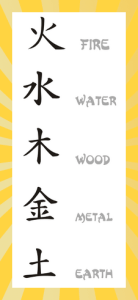
What could be more important than our health, and how many of us are as healthy as we would like to be? Do we all awaken refreshed after a good night’s sleep? Do we have enough energy to get us through the day? Are we relatively free of pain?
Many of us do not know whether we are healthy because we do not have an adequate definition of health. The notion that health is merely the absence of disease has dominated the thinking of Western doctors for the past few hundred years, but now another view is emerging—one that defines health as a positive phenomenon involving a definite feeling of well-being, both mental and physical. At the same time, we are witnessing a shift in public interest toward forms of medicine which emphasize preventative care and the enhancement of well-being.
Chinese medicine has recognized the value of preventative care for centuries. In the earliest acupuncture text, the Yellow Emperor’s Inner Classic, written circa 500 B.C., it is stated that the superior physician diagnoses and treats illness before it manifests in a form where the patient develops symptoms. The inferior physician, on the other hand, waits until his patients have developed obvious symptoms. In fact, in earlier times, doctors were paid to keep patients well and actually lost their salaries when the patient got sick. We read that to administer medicines to diseases which have already developed and to suppress revolts which have already developed is comparable to the behavior of those persons who begin to dig a well after they have become thirsty and of those who begin to make their weapons after they have already engaged in battle. Would these actions not be too late?
This type of preventative medicine is based on traditional diagnostic techniques involving the pulse, abdomen and tongue that allow the acupuncturist to discover subtle disturbances in the energy field of the body before they manifest as clinically observable diseases. This energy field is reported to be visible to clairvoyants as an aura surrounding the body and has been photographed using the techniques of Kirlian photography. According to Chinese medical theory, this energy flows through an intricate system of channels, or meridians, and can be influenced at specific points on the surface of the body. An imbalance in the flow of energy in the meridians can be corrected using pressure or fine needles at these points, and many diseases can be prevented or aborted.
Disease, then, is treated while it is pre-clinical. It could be said that through acupuncture, the entelechy, or informing principle, of the disease is treated rather than the disease itself. It has been observed by the Chinese, for example, that everyone is of a certain constitutional type, and that different constitutional types are prone to develop different types of diseases. This idea is not foreign to us. We all know people who have “strong” or “weak” constitutions, and Western medicine recognizes the existence of “type A” and “type B” personalities.
The idea of constitutional types is taken much further by traditional Oriental medicine, which recognizes the existence of five distinct types. These types are categorized in terms of 5 elements—Wood, Fire, Earth, Metal and Water. A “Wood” type, for example, is prone to develop digestive problems, PMS, endometriosis, migraine headaches, high blood pressure, strokes, and even cancer. However, long before such diseases develop, a “Wood” type out of balance will display certain characteristic signs that will lead a trained acupuncturist toward a diagnosis and treatment plan. He or she will often have a hard or “wiry” pulse, the abdominal muscles may be overly tight right below the ribs, or hypochondrium, and the tongue may be red and curled up along the sides. The muscles of the body may tend to be tight or stiff, and the person may also anger easily or be prone to depression and feelings of frustration. Appropriate treatment at this stage can help keep disease from developing later.
This system of classification is ancient, but it has proved itself to be as useful today as it was in times past. As mentioned above, each constitutional type has its own set of diseases, but it is beyond the scope of this article to discuss them all. For preventative medicine of this type to be effective, the patient must, of course, see an acupuncturist at regular intervals. A reasonably healthy person need only come in every one to three months. Even with this much time between treatments, an enhanced sense of well-being is commonly reported. People who are more out of balance will benefit from weekly treatments for a time, and then can move to a maintenance schedule in which treatment is less frequent.